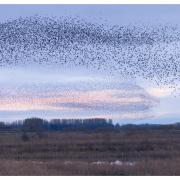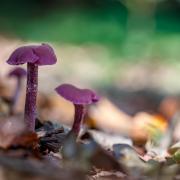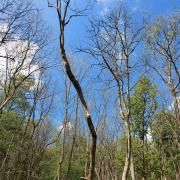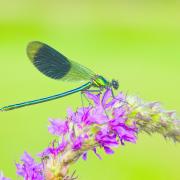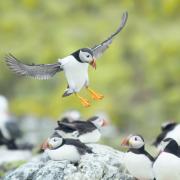With a coppery-orange autumn backdrop, the stage is set this month for one of nature’s finest challenges – the annual deer rut. But there’s a lot more behind this spectacle of seasonal sparring, as Yorkshire Wildlife Trust’s Tom Marshall reports

When it comes to impressing the opposite sex in the animal world, Yorkshire has no shortage of show-offs. From lekking black grouse in our uplands ‘busting a move’ that wouldn’t be out of place in a Leeds or Sheffield night club, to seabirds bringing gifts of fish or even bitterns with a ‘booming’ call that would give Barry White a run for his money.
But when it comes to a show of sheer masculine prowess and testosterone-filled action, little can beat the annual deer rut.
One-to-one combat in its rawest form may not be everyone’s cup of tea, whether in the boxing arenas of the world or a pub car park, but few can fail to be impressed by this autumnal spectacle that plays out across our parks and countryside.
Of course, behind the bluster, showboating and fancy moves there’s always an agenda. In the case of our wild deer, this is the males’ annual chance to take charge of a harem, and father the herd for the upcoming breeding season.

With so many highly-charged hormones floating around however, deciding who will take the crown requires weeks of exhausting, dangerous and even life-threatening battles.
Beginning around September and often peaking this month, the pilgrimage for stags begins as they make their way to the home range of females in season. In closed parks of course this is relatively little distance, but in Yorkshire’s Moors and Dales can involve much longer treks.
Although male red deer – our largest land mammal – typically ‘mature’ at around two years old, breeding won’t take place until at five years of age, with males reaching their peak condition at seven years old.
A full-on fight, contrary to popular belief, is a last resort in most cases, with posturing and other behaviours among would-be dominant males likely to be the tactic of choice in most clashes.

The rut may begin with ‘parallel walking’, a seemingly harmless and almost stately gesture between similarly matched males, but with an undertone of ‘sizing-up’ by both parties.
Sound is key to the performance, with deep, guttural bellowing part of the repertoire – a signature that also helps to bring viable females into heat in readiness for mating.
A curious taste and smell combination is also part of the olfactory ritual, with lip-curling a common behaviour, as the deer access the pheromones that lay heavy in the air of the rutting area.
As with any self-respecting suitor out to impress, the attire and ‘look’ is everything. For male deer, this means adorning their antlers with whatever is to hand – in autumn this is usually tall grasses from the summer growth, or especially bracken.
As ridiculous as it may appear to the human observer, generating these extra colours, textures and size in their profile in the landscape can add to the intimidation of potential competitors. With necks thrown back in mid roar, such adornments are enough to unease even the most cocky of young guns.
Unsurprisingly, the antlers remain the primary weapon in the armoury. When it comes to the rut, points really do mean prizes.
The most magnificent males could become ‘16 pointers’, boasting eight menacing-looking calcium-rich spikes on each side of the head. Where calcium is naturally lacking in the environment, the previous season’s antlers themselves (shed in early summer) may be ground-up and consumed. Just prior to the rut, one of the most irritating stages for male deer is the felt phase of antler growth, and it is not uncommon to see frustrated males rubbing against anything and everything that can help shed this itchy phase in their development.
Although their calcium-rich make-up is plenty tough-enough, the risk of losing an antler in head-on combat (perhaps alongside an eye) is one of the biggest risks.
With the outward appearance sorted, the final step in the process is an aroma. Unfortunately, this may be a mud wallow with a little urine thrown in for good measure, a combination that thankfully only hinds or does – female deer, seem to find irresistible.
So with the full package in place and when a visual assessment of a pretender to the harem hasn’t come to a satisfactory conclusion, there is only one thing for it.
With so much at stake, any head-on dual is carefully calculated, and an inch or two to the left or right enough to miss a firm clash of antlers and instead result in a gash that could make it game over for the loser.
With highly mature males boasting multiple pointed antlers, it’s not uncommon for a spar to result in two male becoming tangled for a period of time, or indeed on rare occasions where the heat of the moment becomes a distraction, fighting males becoming intertwined with fences or other equipment.
With such a stunning spectacle, the autumn rut has become a popular choice for wildlife photographers, however it goes without saying that a generous distance should be maintained from any displaying or rutting deer, and their behaviour should always be carefully observed to ensure you are able to move away if deer or stags appear to be unsettled by your presence.
With care though, this annual display can be one of the most awe-inspiring and easiest to observe in the natural world, right here in Yorkshire.












